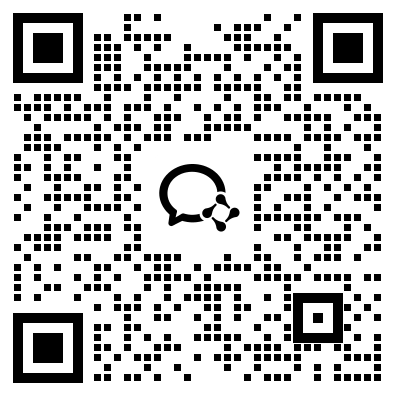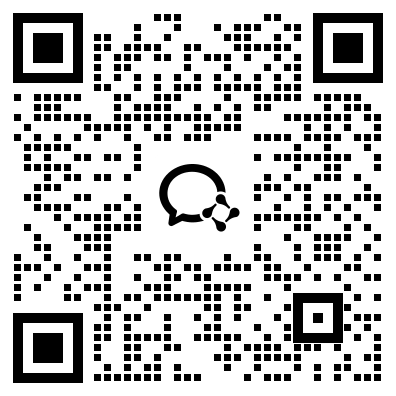【特惠】26考研
红包
【考研】专业课HOT
26考研
【MBA】在职考研
【规划】择校备考
【报录比】查询
计划
【真题】全套解析
资料
【申硕】同等学力
预备
【大纲】5500词汇
免费
【在线】英语测评
免费
【大纲】最新大纲
精
【福利】0元好物
速抢

扫码加入训练营
牢记核心词
学习得礼盒
暑期集训来了,如何在暑期两个月创造出双倍的价值是每个考生想要达到的目标。这就 需要加倍的努力和科学的规划了。英语方面的复习,大家要持续性背单词,阅读、写作及翻译要多加练习,总结方法技巧,活学活用。下面新东方在线和大家分享理学类的阅读模拟题,大家不妨集中练习,提升阅读速度和做题技巧。
2016考研英语阅读暑期训练:理学类(8)
The basic workings of DNA and RNA are no mystery. It's now well known that DNA consists of four nucleotide “bases” (A, T, C and G), whose linear sequences (AATAGGCTCC……) encode hereditary information. Genes——discrete segments of long DNA molecules——transcribe their sequences onto single-strand messenger RNA molecules, which then serve as templates for proteins. In short, DNA makes messenger RNA, and messenger RNA makes proteins. The production of a particular protein is the goal of each gene. This 50-year-old insight is the bedrock of modern biology, but science has not fully solved a related mystery. If every cell in an organism contains the same full complement of genes, why are the cells themselves so varied? How do different genes get turned on (“expressed”) or off (“silenced”) in just the right combinations to produce heart cells, bone cells and brain cells?
That's where microRNA enters the picture. In the early 1990s, researchers studying a species of worm discovered genes for a very short and very unusual piece of RNA. Instead of synthesizing proteins, this tiny RNA molecule latched onto messenger RNAs (chart), causing their destruction. Without messenger RNA, no protein was produced. In effect, the gene for that protein had been silenced. The discovery was initially dismissed as an oddity in a worm, but scientists have since found genes for hundreds of microRNAs in various plants and animals——200 in humans alone. Many of these genes have survived in identical forms in different species, indicating that they are essential to life. What, exactly, is their role? We now suspect that by silencing particular genes at just the right times——a process called RNA interference——they push genetically identical cells down different paths of development, enabling some to digest food while others perceive light.
RNA interference gives researchers a new tool for understanding how living things grow——how a plant assumes a particular shape, for example, or how a baby's hand forms during gestation. Moreover, because microRNAs are so small and simple in structure, they can be manufactured for use as research tools. If scientists suspect that a particular gene is responsible for a disease, they can design microRNA to silence the gene in affected laboratory animals. If the disease is prevented or cured, the gene becomes a target for treatment.
RNA interference has yet to generate new medicines, but if the technique fulfills its promise, it could help us treat everything from viral infections to cancer. MicroRNAs could be used to seal off human cells from disease-causing viruses, or to disable viruses that gain entry. In a recent test-tube study, researchers showed that RNA interference could make cells impermeable to HIV. Early studies suggest that microRNAs can also boost the production of stem cells in culture. By blocking production of growth-promoting proteins, microRNAs may even help contain cancer cells.
It is one thing to manipulate cells in a test tube, quite another to treat people. Getting microRNAs safely into the right cells in the body will be complicated. No one has yet attempted a human experiment. Even so, a field that was just a curiosity in 1993 is now poised to change the world——all because we invested in basic research. The scientists who discovered microRNAs were not trying to prevent AIDS, grow stem cells or treat cancer. They just wanted to figure out how something happened in a worm. As Buckminster Fuller observed, “Development is programmable; discovery is not.”
注(1):本文选自Newsweek; 12/8/2003, p96-96, 1p, 1 diagram, 1c;
注(2):本文习题命题模仿对象2004年真题Text 3;
1. The expression “silenced”(Line 5, Paragraph 2) most probably means _________.
[A]ruined
[B]destroyed
[C]killed
[D]stopped
2. How does the author feel about the study of MicroRNA?
[A]Optimistic.
[B]Confused.
[C]Frightening.
[D]Shocking.
3. When mentioning “It is one thing to manipulate cells in a test tube, quite another to treat people.”(Line 1, Paragraph 5), the author implies that __________.
[A]the test of cells and the treatment of people are unrelated to each other
[B]the treatment of people is more complex than the cells in the laboratory
[C]more emphasis should be laid on the human tests
[D]human treatment may not be successful
4. What does Buckminster Fuller mean by “Development is programmable; discovery is not.”(Last Line, Last Paragraph)?
[A]Discovery is always made beyond one‘s expectation.
[B]Development is easier than discovery.
[C]Development lacks curiosity while discovery does not.
[D]Development is less important than discovery.
5.Which of the following is not true about RNA interference?
[A]It prevents disease-causing viruses from entering human body.
[B]It improves the production of stem cells.
[C]It can cure of all kinds of human diseases.
[D]It silences certain protein to prevent tumor.
答案:DABAC
【英语阅读资料】这里有↑↑↑

添加班主任领资料
添加考研班主任
免费领取考研历年真题等复习干货资料

 推荐阅读
推荐阅读
为了让考研的同学更高效地复习考研英语,新东方在线考研频道整理了“考研英语1阅读错几个后的复习计划”,考研的同学可以了解一下,希望对大家有所帮助。
为了让考研的同学更高效地复习考研英语,新东方在线考研频道整理了“考研英语二阅读篇数及题型分析”,考研的同学可以了解一下,希望对大家有所帮助。
为了让考研的同学更高效地复习考研英语,新东方在线考研频道整理了“考研英语阅读理解的总结与反思”,考研的同学可以了解一下,希望对大家有所帮助。
来源 : 网络 2025-06-13 08:02:00 关键字 : 考研英语阅读理解
为了让考研的同学更高效地复习考研英语,新东方在线考研频道整理了“提高考研英语一阅读理解的五大策略”,考研的同学可以了解一下,希望对大家有所帮助。
为了让考研的同学更高效地复习考研英语,新东方在线考研频道整理了“探索考研英语阅读文章的逻辑结构”,考研的同学可以了解一下,希望对大家有所帮助。
来源 : 网络 2025-06-12 08:03:00 关键字 : 考研英语阅读

 资料下载
资料下载
扫码添加【考研班主任】
即可领取资料包
扫码添加【考研班主任】
即可领取资料包
扫码添加【考研班主任】
即可领取资料包
扫码添加【考研班主任】
即可领取资料包
扫码添加【考研班主任】
即可领取资料包
扫码添加【考研班主任】
即可领取资料包
新东方在线考研资料合集
下载方式:微信扫码,获取网盘链接

目录:
1.2013-2023年近10年政数英真题及解析PDF版(新东方)
2.2013-2023年专业课考试历年真题及解析PDF版
3.24考研复习备考资料大合集:大纲+备考资料+词汇书+考前押题+自命题
资料介绍:
1.2013-2023年近10年政数英真题及解析PDF版(新东方)
 、
、
2.2013-2023年专业课考试历年真题及解析PDF版


3.24考研复习备考资料大合集

3.24考研复习备考资料:考研大纲

3.24考研复习备考资料:政数英备考资料+自命题真题

------------------
考研备考过程中,尤其是专业课部分,参考往年的考试真题,对于我们的复习有更好的帮助。北京大学考研真题资料都有哪些?小编为大家进行了汇总。
北京大学考研真题资料-公共课

北京大学考研真题资料-专业课


以上就是关于“北京大学考研真题资料下载(历年汇总)”的整理,更多考研资料下载,请关注微信获取下载地址。
扫码添加【考研班主任】
即可领取资料包
扫码添加【考研班主任】
即可领取资料包
扫码添加【考研班主任】
即可领取资料包
扫码添加【考研班主任】
即可领取资料包
扫码添加【考研班主任】
即可领取资料包
扫码添加【考研班主任】
即可领取资料包
扫码添加【考研班主任】
即可领取资料包
扫码添加【考研班主任】
即可领取资料包
扫码添加【考研班主任】
即可领取资料包
扫码添加【考研班主任】
即可领取资料包
扫码添加【考研班主任】
即可领取资料包
扫码添加【考研班主任】
即可领取资料包
扫码添加【考研班主任】
即可领取资料包
扫码添加【考研班主任】
即可领取资料包
扫码添加【考研班主任】
即可领取资料包
扫码添加【考研班主任】
即可领取资料包
扫码添加【考研班主任】
即可领取资料包
扫码添加【考研班主任】
即可领取资料包
扫码添加【考研班主任】
即可领取资料包
扫码添加【考研班主任】
即可领取资料包
扫码添加【考研班主任】
即可领取资料包
扫码添加【考研班主任】
即可领取资料包
扫码添加【考研班主任】
即可领取资料包

 阅读排行榜
阅读排行榜
 相关内容
相关内容